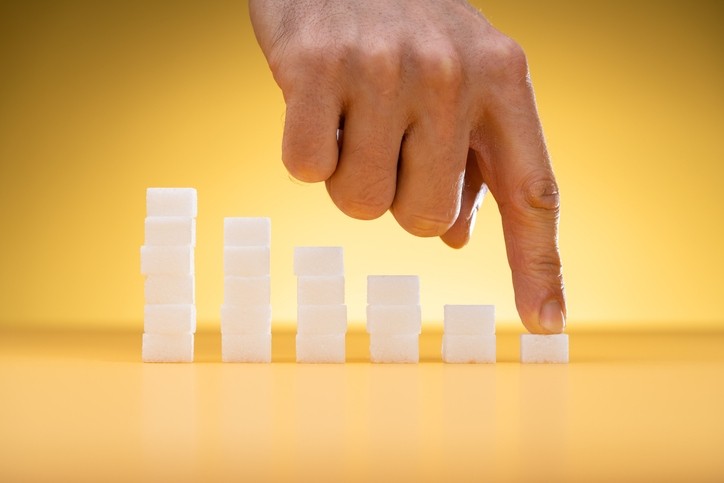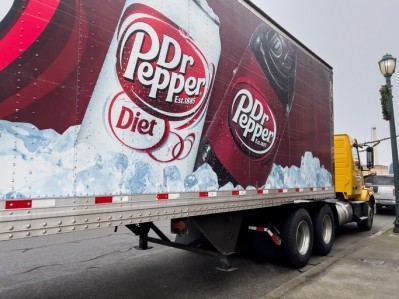How to reduce calories in beverages

Soft drinks are arguably a leading force in calorie reduction and can act as a model for the wider food and drink industry. With soda having now spent decades in the firing line from health campaigners, it’s the category that’s put the most effort into reducing sugar. What methods are beverage brands using – and how well are they working?
Reformulation
Changing the recipe to reduce sugar is the most obvious place to start. Beverages can reduce sugar by turning to non-calorific sweeteners: with a host of options at their disposal.
Manufacturers have voluntarily been looking at their beverage portfolios and working out where they can reduce sugar. But efforts have also been driven by public health policies.
The UK credits the introduction of a sugar tax in 2018 as prompting mass reformulation and reduction in sugar in beverages.
In fact, a large chunk of reformulation took part before the taxes even came into effect as manufacturers reshaped their portfolios to reduce their exposure to the tax. The same was also seen in South Africa, where a tax was introduced the same year.
Reformulation, however, needs to be treated carefully. UK energy brand Lucozade faced a backlash after it tried to cut sugar in 2017 ahead of the sugar tax: consumers did not hold back on their opinion of the new drink. Another interesting consequence was the dismay and confusion created among diabetics: who had known they could turn to Lucozade to treat hypoglycemia.
Diet drinks and sweeteners
Big players such as Coca-Cola and PepsiCo have seen sales of diet and zero sugar drinks boom.
They're also widening availability of zero sugar drinks across their portfolio: and a new trend is that they commonly launch a zero sugar version alongside a new drink as standard and as an equally valued proposition.
Beverage manufacturers looking to go zero calorie have a wealth of sweetener options at their disposal.
Some consumers remain wary about artificial sweeteners: but others welcome the option to have a sugar-free drink.
And innovation in natural sweeteners continues to gather pace.
Rethinking sweetness and taste profiles
For decades, beverages were always sweet. But how sweet do they really need to be?
Sugar levels have always varied dramatically between countries: even global products such as Coca-Cola, Fanta and Sprite have different formulations in different countries and their sugar content varies dramatically (the US tends to have the most sweet and sugary beverage profiles, while Europeans tend to go for something less sweet).
That addiction to sweetness is something Michelle Obama's PLEZi is trying to address: the brand is on a mission to fundamentally adjust kids' palates to less sweet beverages overall ('The US has a massive sugar problem, but also a massive sweetness problem,' explains co-chair Sam Kass).
In changing kids' expectations, it hopes that can make a real, long-term mass change - it if can shape kids' palates to expect less sugar when they're young, that should carry on throughout their lives.
And as consumers move away from the super-sweet, they’re instead opening up to sour, savory or more complex flavor profiles. Enter innovations such as kombucha or beverages with sour or chili notes.
The catch? Any drink trying out a less sweet profile still needs to taste great if it is to be competitive in today's market (fermented taste profiles, after all, aren't for everyone).
Changing taste expectations is a long-term game.
Calorie reduction success across the world
US
From 2014 to 2022, soft drink calories per person in the US fell 7.7%, according to American Beverage. This was mostly driven by decreases in per person volume sales of full-calorie soda and 100% juices and juice drinks, which fell by 8.5% and 17.0%, respectively.
These decreases - combined with the growth in per person volume sales of water and other no-calorie beverage types - resulted in no- and low-calorie beverages growing from 51.6% of all volumes in 2014 to 60.2% in 2022.
Europe
UNESDA’s members have reduced average added sugars in their soft drinks by 28.6% since 2000.
National markets across Europe can differ significantly in terms of sugar reduction and methods: however, 60% of new launches over the last decade have been no or low sugar.
UK
Low/No Calorie soft drinks accounted for 71% of category sales in 2023. Take-home sugar from soft drinks fell by 43.5% between March 2014 and March 2020, according to Kantar Worldpanel data quoted by the British Soft Drinks Association.
Smaller packaging sizes
Smaller packaging sizes help consumers control how much of an indulgent treat they consume.
In the US, containers smaller than 11 fl oz grew almost threefold between 2014 and 2022. A common alternative to a standard can size at 12 fl oz is a 7.5 fl oz format: used by numerous big name soda brands.
In Europe, the industry now offers consumers the choice of 30 different pack formats under 300ml / 10 fl oz.
Skeptical consumers, however, are quick to see smaller can sizes as a sign of 'shrinkflation' and brands need to make sure the price is right for smaller versions.














